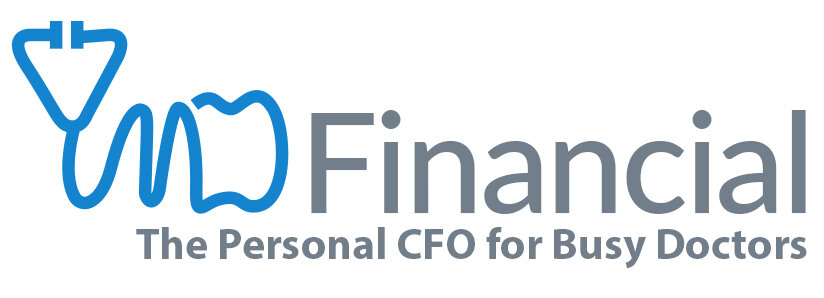Written by Josh Lantz, CRPC®/ Chief Investment Officer, Financial Advisor
After the recent collapse of the 16th largest bank in the United States, Silicon Valley Bank (SVB), more and more doctors have been talking about FDIC limits.
As a reminder, FDIC limits are the protections provided to your bank accounts sponsored by the United States government through the Federal Deposit Insurance Corporation (FDIC). Examples being your checking accounts, savings accounts, and CDs held at a banks protected under FDIC insurance.
In the event of an FDIC bank failure, the FDIC reimburses depositors of that bank up to certain thresholds. When you hold money at a bank you’re referred to as a depositor. Your deposits are insured up to $250,000 “per depositor, per FDIC bank, per ownership category[1]”.
The ideal situation for all doctors is their checking, savings, or CDs should always be below the insurance thresholds offered by FDIC. That way, if a bank fails, the FDIC insurance protects you and you get your money bank.
But what happens if you hold more than $250,000 in cash or CDs? Let’s walk through some steps to protect more of your cash.
Per FDIC Bank
Remember the FDIC insurance is per FDIC bank. Most banks in the United States are members of FDIC insurance. The way to tell is to go to your bank’s website and search for “member FDIC”. Somewhere on their website, usually on the of the bottom page, they will disclose this.
Given FDIC insurance is offered by each FDIC member bank, one option if you have more than $250,000 in cash is to spread out your cash at multiple banks. This is one option to protect your cash and make sure more of it is insured.
Below is an example of someone with $1,000,000 in cash. The before example shows their starting place, and after shows after spreading cash at multiple banks.
BEFORE
AFTER
Per Depositor and Ownership Category
A lesser-known way to protect your cash at banks is by depositor by ownership category. To understand this let’s review FDIC rules.
They allow $250,000 for each ownership category for each depositor. Examples of ownership categories are:
Individual account
Joint account
Revocable Trust account
Irrevocable Trust Account
Corporate Account
That means if you have over $250,000 at a FDIC member bank, you could divide it by different ownership categories to make sure it’s protected by FDIC insurance.
For example, let’s say you have $1,250,000 in cash at a FDIC member bank owned jointly between a married couple. Given there’s two depositors and one ownership category they both get $250,000 in FDIC insurance for a total of $500,000 of protection at that bank for a joint account assuming there’s no beneficiary.
BEFORE
This same married couple becomes aware they’re partially uninsured by FDIC at their bank. They get clever and change some of their ownership categories around to optimize their FDIC limits.
AFTER
By moving their cash to new accounts at the same bank to achieve more FDIC protections simply because they spread the cash in multiple ownership categories. As a result, their $1,500,000 in cash is now insured up to $1,500,000, even though it’s held at one bank.
Keep in mind if you had multiple individual accounts in your name at one FDIC member bank they sum to be $250,000 of FDIC protection in total. In other words, you cannot just keep opening new bank accounts within the same ownership category to get more FDIC insurance. The ownership must be different to get the benefits of the extra FDIC insurance.
FDIC Calculator
If you’re confused, the FDIC has a calculator, linked below on their website, where you can input your specific situation to see how much FDIC insurance you have at each FDIC member bank.
Final Thoughts
We think it’s valuable for doctors to optimize your FDIC protections. There’s no reason to hold uninsured cash given acquiring the insurance is free for you. We do not believe you should feel anxious about your cash if you are under the FDIC limits. The reason is, the government has already agreed to back stop those amounts.
Because many doctors have large bank accounts; we think optimizing your FDIC limits should quell any fears of bank runs and help you sleep at night.
If you have any questions or concerns always free to reach out by contacting us at info@mdfinancialadvisors.com
Disclaimer: The bank names above were selected at random given they are well known and large banks. We are not making a recommendation on any bank.
FDIC insurance joint ownership requires co-owners be living people, co-owners have equal rights to withdrawals, and all co-owners have personally signed a deposit account signature card. Also, if co-owners of joint accounts have designated one or more beneficiaries the account would be insured as a revocable trust. You can find additional details here on the FDIC website.
Josh Lantz, CRPC®/ Chief Investment Officer, Financial Advisor With over a decade of financial planning experience, Josh has worked on more than 450 doctors’ financial plans. “It’s very hard to find a doctor’s situation I haven’t seen before,” says Josh. This is only a snapshot of the expertise Josh brings to MD Financial. He was recently recognized in Medical Economics for Financial Adviser for Doctor’s in 2017-2018, as well as Dental Products Report’s Best Financial Adviser for Dentists in 2019. In 2022, Josh was recognized as a Five Star Wealth Manager Under age 40. He can be reached at Josh@mdfinancialadvisors.com.
The views expressed are those of the author as of the date noted, are subject to change based on market and other various conditions. Material discussed is meant to provide general information and it is not to be construed as specific investment, tax, or legal advice. Keep in mind that current and historical facts may not be indicative of future results. The information contained in our presentations has been compiled from third-party sources and is believed to be reliable; however, accuracy is not guaranteed.





